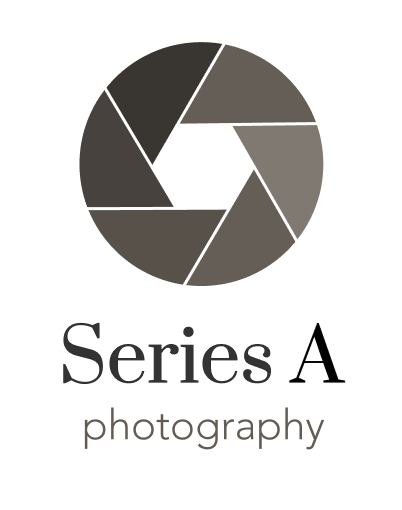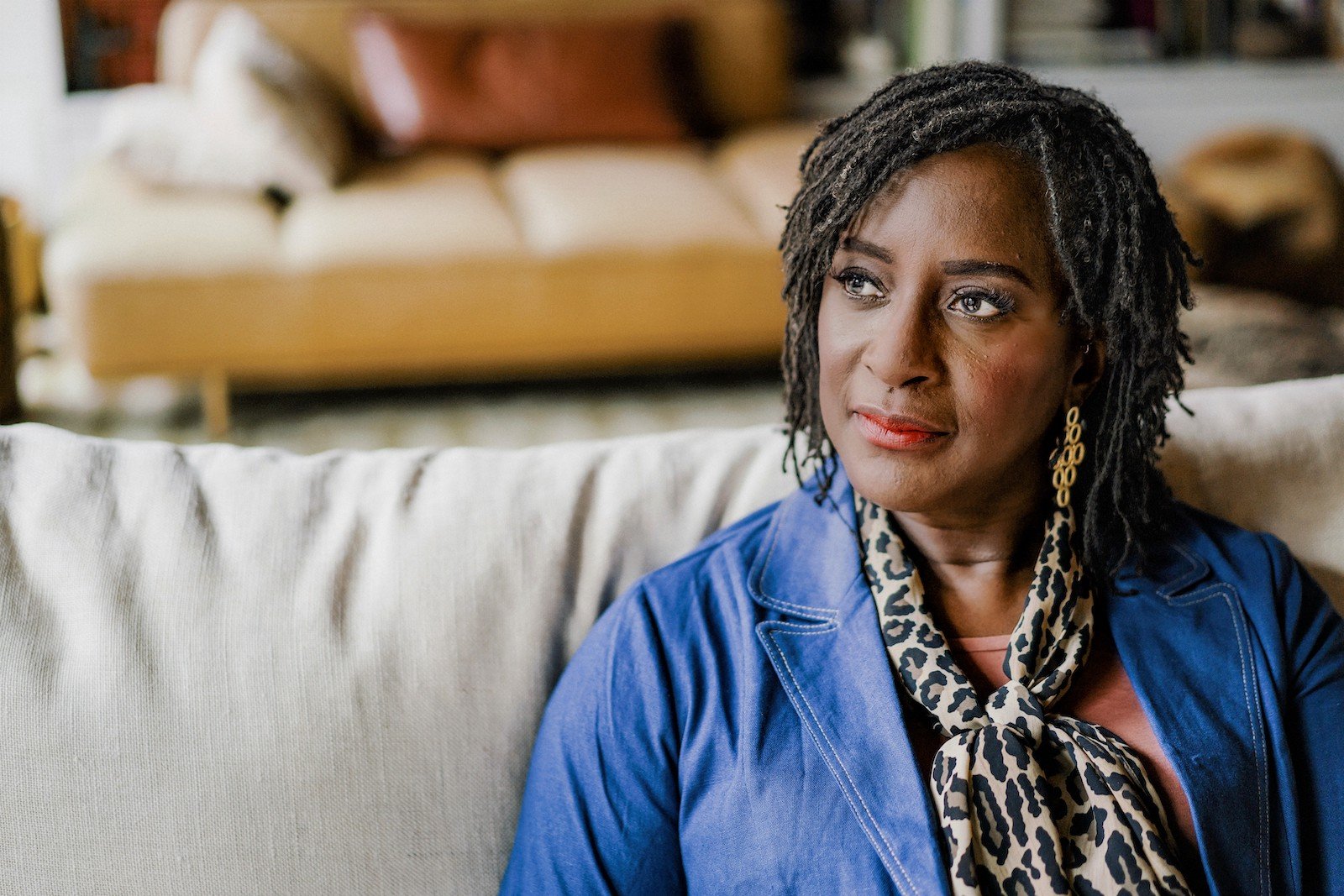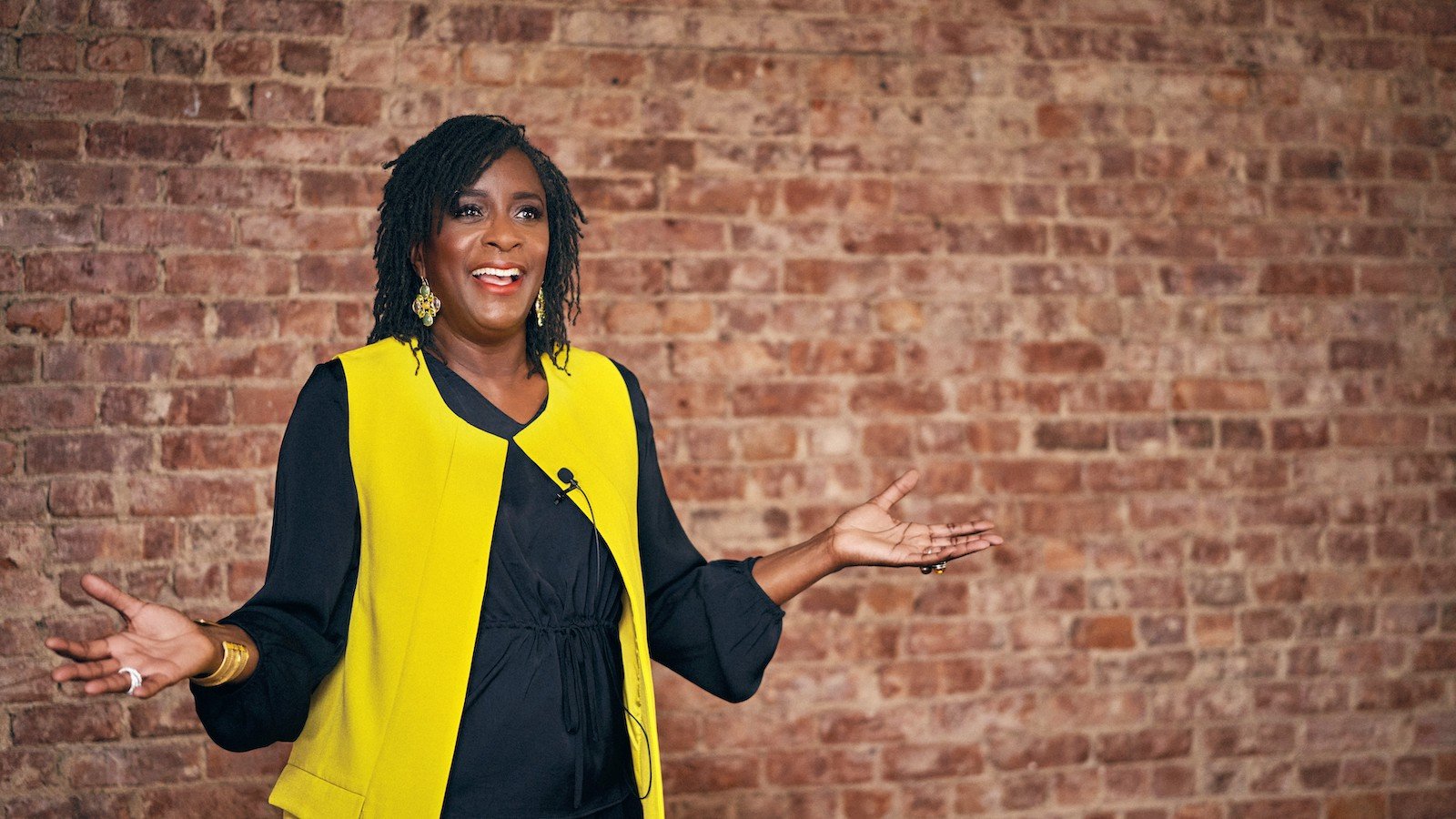“I need to draw a line in the sand” - Gena Cox’s personal branding experience
Gena Cox (Website | LinkedIn) is an organizational psychologist, leadership coach, author and speaker. Her mission is to help business leaders understand that human variation is normal so they will build inclusion into the way their organizations operate. She wants leaders to manage the different kinds of people in their organizations humanely so that all employees can have the experiences at work they really crave.
In this interview, Gena shares more of her story, as well as her experience working on her branding photo session. This is a summarized and edited version of the interview. The full video of the interview is at the end of this post.
How did you arrive at your mission? What’s the story behind that?
I've worked in corporate America for 20+ years, always advising senior leaders about a variety of things having to do with the human experience, whether it's organizational culture, leader effectiveness or employee engagement. Even though I spent decades in that space,, I always thought I was a bit hypocritical about my own personal experience. I wasn't always having a good time. I would show up in these boardrooms with a plastered-on poker face, I would play the game by doing what needed to be done, and then walking away.
All that changed when Breonna Taylor was killed in March 2020. When I heard the news, I immediately thought, “That could have been my daughter!” And then unfortunately, a couple of months later, George Floyd was killed.
After that, I decided that I needed to be more authentic. Not just authentic in terms of speaking my truth in my personal life, but showing up in business situations, willing to say the difficult things to power if that is what was necessary. I decided to write a book to support this mission. To accomplish this, I quit my job in early 2021, which led me to where I am today.
That must be a challenging job! How are people in the corporate leadership world responding to your message?
I’ve been working on this for a year and a half, but I'm not as worried about messaging as I used to be. As a trained consultant in large consulting organizations, all you ever think about is: How should I deliver the message? How is the message being received? You're constantly monitoring and tweaking your message.
That’s not where I am now. Instead, I have decided that I need to draw a line in the sand and help others see if, even if they don’t fully understand or agree with it. I want to state what I believe and stand for, knowing fully well that at least half the people I’m speaking with will probably not want to hear what I have to say.
So when you ask how people are reacting, there’s a distribution. You have people on one side who don't want to hear anything about this. You have the ones on the other side that want me to talk about this more often and more loudly. And then you have the ones in the middle that are very wishy-washy.
I can’t tell you that everything I say is well received by everyone, but that's the challenge and the opportunity. My audience is primarily corporate leaders who govern the lives of so many of us every day. It is really important that they hear the message whether they like it or not.
Amazing! What made you decide that this was the right time for a photo session?
Well, I needed photos for practical reasons. My book is being published in October, I need photos for LinkedIn, my new website and so on.
But I had two challenges. First, I’m very camera shy. I prefer never to be on camera. The other reason is related to your previous question. I want to convey that as much as I have difficult messages to share, I’m also someone with whom my potential clients and readers can feel safe exploring this topic. I’m honest and data-driven, but I also empathize with the specific obligations that my corporate leader clients have to meet.
People see me as very serious and action-oriented. It’s easy for me to convey credibility, competence, authority and expertise. But I’m less effective at conveying that I’m also this person who’s fun to be with, who has a great sense of humor, who’s empathetic and who cares about the same things they do on a daily basis.
So my photographs have to do a lot of work, and that wasn’t going to be easy!
What was the process of planning the photo shoot like – the mood board, planning session and so on?
It was a lot of fun! I remember being resistant to the idea of doing a mood board at the beginning. Ideally, I wished that somebody else could just step into the photo shoot and do it for me! To be fair, I was fearful that I might be overwhelmed. I don’t think of myself as a visual person, so I thought it would be hard for me.
But once I let it go and really focused and played with it, I had a lot of fun! I didn’t think that I would have even a few images, but in the end I added way more images to the mood board than you probably needed.
During that process, I discovered my preferences about things I wouldn’t have considered before: colors, environment and so on. I hadn’t ever done a mood board as part of a photo shoot before, but after doing it, I felt like we were speaking the same language.
For clients who don’t think of themselves as visual or artistic, what advice would you give on how to get started on the mood board?
First of all, you probably have a couple of photos that you have a memory of, or you’ve saved on your phone. Start by adding those to your board first. I’ve actually been collecting photos along the way for a while, but I never did anything with them. Once I added those to the board, they reminded me what I liked about them and that helped me focus on my current preferences. Then it became easier to find other photos that conveyed the feeling I got from those first few selections.
Once I got that initial first pass, I started seeing all of the degrees of possibilities. I started coming up with things that I wouldn’t have thought of putting on my board before this process. But this is a creative process, right? And we’re all creative, even though we might not always believe that. I felt that this process really opened up access to my own emotions!
The mood board also helped guide me in selecting outfits for the photo shoot, and other e little objects that were meaningful to me. For example, I brought a book, a couple of dolls and a glass object. These items were significant to me. It also helped me with color selections. In the past, I’ve always gone to photo shoots with too little or too much. But because of this process and the mood board, I was able to quickly make the choices about what I wanted to put together for the actual photo shoot.
How did the day of the photo shoot go for you?
The photo shoot had so many elements that I hadn’t experienced before. For example, the makeup artist at the beginning was wonderful to work with because I felt good about myself by the time it was done. But what really set the tone for me was your assistant. She started the conversation with a mindfulness exercise in which we all participated. It got me grounded even before we started talking about outfits and posing or anything else.
I appreciated the opportunity to be in the moment, put everything else aside and focus into my own body. I hadn’t met you in person before, and I hadn’t met your assistant at all. You and I had only had several Zoom meetings. But somehow, in a very short time, I was able to create a level of trust and connection to your team. For me, that meant that I could truly access the emotions I needed to enhance the whole experience.
Your assistant (who’s also a Somatic coach) helped me connect with and express what I was feeling in the moment throughout the shoot. But even beyond that, that was a really stressful week for me since I had been traveling extensively. The exercises we did during the photo session actually helped me feel better even after the shoot. It was great!
What did it feel like to see your photos?
The photos were so much fun! So much of that was because we had taken the time to think through and plan the experience. We had a great location in NYC. I love how the photos convey energy, positivity and a little bit of fun, and yet they were professional.
I appreciate how you were able to capture the situations I’m in most often. I’m an author, so I’m often sharing ideas with people one-on-one. I’m a speaker so I’m often expressing myself on stage with both my words and my body.
We were on some cobblestone streets in SOHO in New York, with some graffiti over here, a top-notch restaurant over there. For a few minutes, I could pretend like I was a model!
As a woman of color, having worked with several makeup artists and photographers in the past, I’ll say explicitly that not all photographers know how to capture us well. Though that wasn’t the main reason I chose to work with you, it was an outcome that I was very pleased with.
I love the photos and I picked out a few favorites right away. I even picked out a few of the bloopers. They’d be fun to have even if I never use them on the website.
Sometimes you do a photoshoot, you get the photos and you feel let down, like there’s still something else that you wanted to capture. But in this case, I have enough of a repertoire of options that I’ll be able to use them for quite some time.
Would you recommend this experience to a friend or colleague? What would you tell them?
I would definitely recommend it!
If you’re not just looking for some photographs, but looking for a process, to get an understanding of what it is that’s most important to you, what feelings you want to evoke in the photos, you need someone who’s thinking not just about the image, but also about your emotions and your body. For example, I remember your assistant regularly making sure I drank water, and I remember thinking, “Gosh, nobody has ever told me that I need water during a photoshoot!” And yet, I now see the connection between being dehydrated and how I look in the photos!
So what I’d say about your offering is that it’s a holistic partnership. I had some skin in the game. You didn’t just show up and tell me what to do. From the beginning, it felt like I could be actively involved in providing some reference points, and then you’d offer your professional guidance. Your entire team was part of that experience. In the end, I have something I’m proud of and I can use the photos in a variety of ways.
Video of interview
An interview with speaker Gena Cox about her personal branding photo experience.










